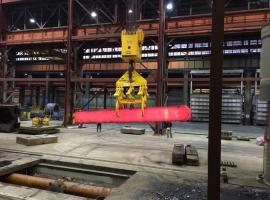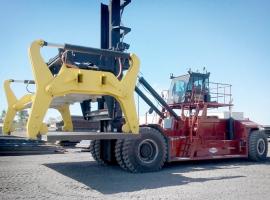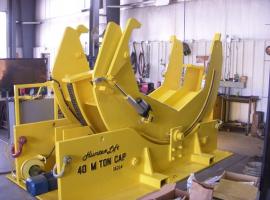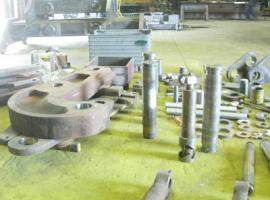Below the Hook Lifting Devices
Below the hook lifting devices are used in various industries to move heavy objects or materials. They are typically installed on cranes, forklifts, and other heavy-duty equipment. There are many hook lifting devices, each with unique features and benefits.
Below the hook lifting devices are essential equipment in many industries, such as construction, warehousing, and shipping. They are often used to move heavy objects or materials, such as containers, crates, and machinery.
Requirements for Below the Hook Lifting Devices
Specific requirements must be met when operating a below-the-hook lifting device. As per the requirements set forth by ASME B30.20 and Occupational Safety and Health Administration (OSHA), all below the hook lifting devices must undergo a series of inspections and assessments before being cleared for operation.
These requirements are set to ensure the device's safety and prevent accidents. Some of these requirements include:
Operational Training
It is a regulated requirement in many jurisdictions that lift operators must have operational training before they can operate below the hook lifting devices. While this may seem like a no-brainer, it is often overlooked in the workplace. Many employers do not realize that their employees may not be properly trained to operate the equipment. This could lead to disastrous results if an accident were to occur.
Operational training for lift operators typically covers topics such as maneuvering the device, loading and unloading materials safely and performing basic maintenance tasks. It is vital for the operator's safety and those working around them.
Pre-Operational Inspection
A pre-operation inspection is the first step in ensuring that a below the hook lifting device is safe to use. This inspection is typically done by the manufacturer or a qualified third party. During this inspection, all safety features of the device are checked and verified. This includes checking for damaged or missing parts, proper assembly of the device, and correct installation of any safety devices.
Review of Manufacturer's Instructions
After the pre-operational inspection, an operator must review the manufacturer's instructions to take a quick recap of things, such as a demonstration of how to operate the device and a test of the device's safety features. The device must follow the manufacturer's instructions and applicable regulations.
Check Point Assessment
Once the operator has carefully read the instructions, the next step is to conduct a checkpoint assessment. The employer conducts this assessment to verify that the device's employees are properly trained and used under the standards of OSHA.
Bottom Line
The use of below the hook lifting devices can help to move heavy objects or materials with ease and safety. But it is necessary to understand the operational requirements of these devices before lifting heavy loads. With some precautions and care, you can easily lift objects from one place to another.
Search
categories
- Select...
- Safety (13)
- Lifting Equipment (12)
- Company (6)
- Materials (5)
- Education (4)
- Services (3)
- Industries (3)
- News (3)
- Cranes (2)
- History (1)
Recent Posts
Comprehensive Guide to Below the Hook Lifting Devices The 6 Advantages of Below The Hook Lifting Devices The Keys to Safety and Design Requirements of Below-the-Hook Lifting Devices Why Below the Hook Lifting Devices Are Essential to Lifting? Requirements for Below the Hook Lifting Devicesarchives
- April 2023 (1)
- January 2023 (1)
- October 2022 (1)
- September 2022 (1)
- August 2022 (3)
- July 2022 (3)
- July 2017 (1)
- June 2017 (1)
- May 2017 (1)
- April 2017 (1)
- January 2017 (1)
- December 2016 (1)





